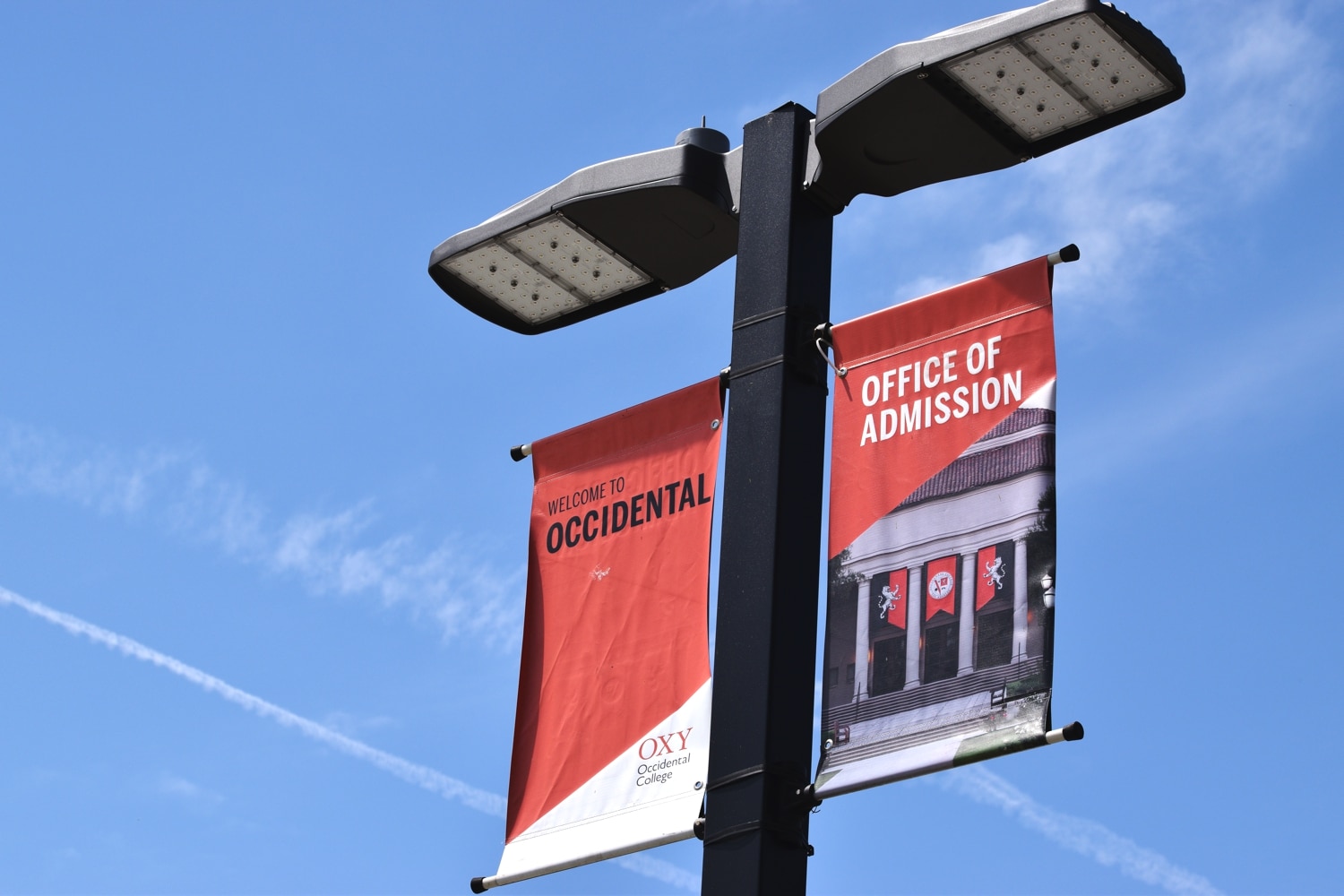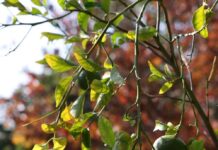Incoming students choose Occidental College for a wide array of reasons: challenging academics; small size; the liberal arts philosophy; proximity to Los Angeles.
Then there are those who took into account the greater Southern California landscape when they chose this school: the dynamic, dusty brown San Gabriel mountain chain, the verdant Malibu Hills, the crashing Pacific surf, or the mystifying and unique Joshua Tree National Park.
I came to Occidental College with fantastical expectations for my upcoming adventures. I imagined spending my weekends road-tripping to Joshua Tree for bouldering and building camp fires, filling the winter months with morning skiing and afternoon waves, visiting Yosemite on the regular and becoming a professional surfer by the end of my first year.
Of course, these expectations were unrealistic, and when the academic hammer falls, it’s necessary to buckle down and set time-consuming hobbies aside. However, outdoor adventuring is less time-consuming with information and resources at hand. Here is a brief overview of some exciting and easily accessible outdoor adventures to be had in the L.A. area.
Hiking
Thanks to L.A.’s favorable weather, hiking doesn’t generally require extensive gear or outfitting. Two hiking hotspots near Occidental are the Santa Monica mountains and the Los Angeles National Forest, which encases parts of the San Gabriel mountain range. Each of the hikes described below are located an hour away from campus by car, with traffic, and they are all free of cost.
Santa Monica Mountains
A more urban mountain chain rising out of the Pacific (think Malibu Hills or the Hollywood sign), the Santa Monica mountains offer shorter, easier hikes with quick access to the beach for a post-trek dip.
This easy hike via the Backbone Trail leads to the summit of Saddle Peak, the second tallest in the Santa Monicas. The hike offers a great view over Malibu Hill mansions and to the ocean, and an artistically graffitied concrete slab to mark the summit.
Trailhead: Stunt Road & Schueren Road, Malibu, CA. Hikespeak, a website dedicated to helping hikers find their way down trails, offers detailed directions.
Also in the Malibu Hills, Solstice Canyon offers ocean views and beach access, as well as interesting ruins. The Rising Sun Trail takes about an hour and a half.
Trailhead: The intersection of Corral Canyon Road and Solstice Canyon Road in Malibu.
Los Angeles National Forest
For a longer and more remote hike, check out Bridge to Nowhere or Switzer Falls in the Los Angeles National Forest and the San Gabriel Mountains. The mountains are dramatically set between L.A.’s urban sprawl and the Mojave Desert.
Bridge to Nowhere is a 10 mile out-and-back hike to a strange bridge surrounded by forest. The walk leads around a rushing river literally filled with gold; you’re sure to see locals crouched at the riverside gold panning.
Trailhead: In Azusa, at Camp Bonita Road, Angeles National Forest.
Switzer Falls is a 4.5 mile out-and-back hike to a spectacular 50-foot waterfall. The trail weaves along a cliff side and through a shady, wooded canyon.
Trailhead: Switzer Truck Trail, Angeles National Forest in Tujunga.
For the mountaineers out there, a challenge awaits with Mount San Antonio, the highest peak in Southern California at 10,064 feet. The Devil’s Backbone Trail is a razor-thin walk along a spiky ridge line — an exhilarating experience. During the winter the peak is covered in snow and requires more extensive gear (snowshoes or crampons).
Trailhead: Mt. Baldy Road & Falls Road, Angeles National Forest, Mt. Baldy.
Some useful websites for hike research are Nobody Hikes in L.A., Hikespeak, and EveryTrail.
Camping
At Occidental, camping trips are generally organized independently by individuals and groups of friends, and a car is typically needed. Occidental does provide gear, through the Student Activities Center (SAC). The SAC offers tents, stoves and fuel, sleeping bags, and pads for a small fee.
Joshua Tree National Park
A vast Mars-scape of otherworldy rock formations, strange and spiky trees unique to the Mojave, and the scene from the Entourage where they take ‘shrooms: that’s Joshua Tree National Park. It is a perfect spot for weekend or Fall Break camping. There are eight main campsites at the park, running at $10-30 per site, and most provide a water spigot, fire pit and road access. Some are reservable, and some are on a first-come-first-serve basis. Find more information at the National Park Service website.
Joshua Tree is also known for bouldering and climbing, so bring along your climbing shoes, harness, ropes or crash pad. Occidental’s Climbing Club occasionally visits the park as well as other outdoor climbing spots.
Distance: About two and a half hours east of campus.
Location: In the Mojave, near 29 Palms.
Cost: $10-30 per site.
Leo Carrillo State Park
Named after actor and conservationist Leo Carrillo (Pancho from The Cisco Kid), Leo Carrillo State Park provides opportunities for swimming, surfing, hiking, and coastal cave exploring. The park offers both RV and tent camping, and tent campgrounds shaded by giant sycamores.
Distance: An hour and a half from campus.
Location; 28 miles north of Santa Monica on the Pacific Coast Highway.
Cost: Sites can be reserved online through the Parks and Recreation website, and only cost $8 per site.
For other camping recommendations, check out the Parks and Recreation’s California Camping Guide.
***
Use this guide as a starting point, and do some research and exploration on your own. At Occidental, the majority of outdoor adventuring tends to be individually organized, so take charge and round up a group of friends for a trip out of the concrete jungle. Fall break is the perfect time to organize a bonding trip and experience Southern California’s natural beauty and diversity.
![]()


































